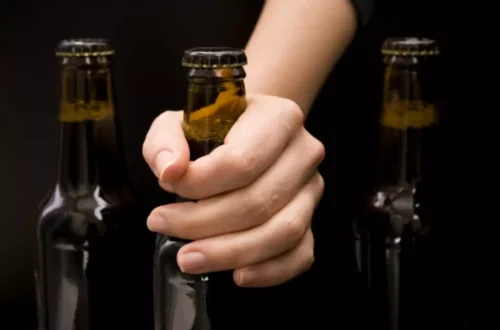
If compared within the framework of the 1971 Convention on Psychotropic Substances, alcohol would qualify as a dependence-producing substance warranting international control (United Nations, 1977; Ofori-Adjei et al., 2007). Alcohol shares some of its dependence-producing mechanisms with other psychoactive addictive drugs. Although a smaller proportion of the population who consume alcohol become dependent than is the case with some illegal drugs such as cocaine, it is nevertheless physiological dependence on alcohol a significant problem due to much the larger number of people who consume alcohol (Kandel et al., 1997). Brittany Burke Robert, the author of this article, has written about health for Oprah Daily, Well+Good, Livestrong, Reebok and other publications and digital brands for over 15 years. She has extensive experience working alongside clinicians and providers to create physical and mental well-being content that’s useful, informative, and clinically effective.
- This is particularly apparent in alcohol dependence developing later in life following, for example, a bereavement or job loss.
- As has been noted previously, relationships with parents, carers and the children in their care are often damaged by alcohol misuse (Copello et al., 2005).
- As with other diseases, individuals vary in the development and progression of substance use disorders.
- If you or a loved one are experiencing dependence, it’s important to seek help and treatment as soon as possible.
- Other compounds under current investigation similarly produce effects by targeting monoamine (eg, serotonin [5-HT], norepinephrine, dopamine) or amino acid (eg, glutamate, γ-aminobutyric acid [GABA]) neurotransmitters.
- Evidence exists for involvement at the hypothalamic, pituitary, and gonadal levels, although the testes appear to be the prime target of alcohol’s actions (Emanuele et al. 1999a).
What Does It Mean to Have a High Tolerance to Drugs or Alcohol?
These conditions are collectively called fetal alcohol spectrum disorders (FASDs). Her work spans various health-related topics, including mental health, fitness, nutrition, and wellness. If you suspect you may have become physically dependent on a prescription medication that your healthcare provider has asked you to take, contact the physician who prescribed the medication to you. Finally, there’s the myth that if you relapse after beating your addiction, you have failed. Just like with other diseases, sometimes you need multiple treatments or repeat treatments. Speak with your doctor if you have become physically dependent on a medication or other substance.
- This quickly leads to changes in coordination that increase the risk of accidents and injuries, particularly when driving a vehicle or operating machinery, and when combined with other sedative drugs (for example, benzodiazepines).
- There are relatively few specific specialist alcohol services for people from ethnic minority groups, although some examples of good practice exist (Harrison & Luck, 1997).
- If you choose to drink, the UK Chief Medical Officers (CMOs) advise that to keep health risks from alcohol to a low level it is safest not to drink more than 14 units a week on a regular basis.
- As a result, marijuana smokers do not typically smoke as frequently as tobacco smokers.40 Typical patterns of use are described below for the major classes of addictive substances.
Mental health
Building healthy habits and considering sober homes can support recovery by providing structure and accountability. Outpatient programs provide continued therapy, support groups like Alcoholics Anonymous (AA)., and education, helping individuals maintain sobriety while integrating back into their routine. This type of rehab program is ideal for individuals with mild to moderate addiction, those transitioning from more intensive programs, or those with external solid support systems. As your stay concludes, the focus shifts to aftercare planning, ensuring you have the tools and support needed to maintain sobriety.
Liver Disease
Indeed, both preclinical and clinical studies suggest a link between anxiety and propensity to self-administer alcohol (Henniger et al. 2002; Spanagel et al. 1995; Willinger et al. 2002). Enhanced voluntary alcohol drinking in dependent mice produced brain alcohol concentrations similar to those achieved during the chronic alcohol exposure that initially rendered the animals dependent. Samples were collected from the nucleus accumbens of alcohol-dependent mice that had undergone three cycles of chronic intermittent alcohol vapor https://ecosoberhouse.com/ exposure (red symbols) and nondependent controls (black symbols). Samples were taken before, during, and after the 2-hour drinking session, when the mice had the opportunity to voluntarily drink alcohol (15 percent vol/vol) or water. Alcohol intake during the drinking session was 3.04 ± 0.15 g/kg for dependent mice and 2.32 ± 0.28 g/kg for nondependent mice. Horizontal lines and shaded area represent brain alcohol levels (means ± SEM) measured in the dependent mice during chronic intermittent alcohol exposure (28.4 ± 3.5 mM).

Treatment for alcohol dependence in such cases must address both the addiction and the mental health condition to ensure a holistic recovery. This dual approach helps prevent relapse and promotes a more stable, long-term recovery. Continued advances in neuroscience research will further enhance our understanding of substance use disorders and accelerate the development of new interventions. The Human Connectome Project and the Brain Research through Advancing Innovative Neurotechnologies (BRAIN) initiative are poised to spur an explosion of knowledge about the structure and function of brain circuits and how the brain affects behavior.

She has extensive experience working alongside clinicians and providers to create physical and mental well-being content that’s useful, informative and clinically effective. If you’re considering a break from alcohol, it might also be helpful to think about why you drink. Try to think about what you’ll replace alcohol with so that you can still get that outlet.” Instead of meeting friends regularly at a bar to connect and wind down, suggest a new workout class you could do together or just meet up for a walk. If drinking is your go-to way to blow off steam after a busy week, schedule a booze-free, self-care activity for Friday afternoons, like indulging in a hobby you enjoy or a pampering session like a massage. “After a few months, the brain will begin to return to health,” says Dr. Abramowitz. Your sleep cycle is continuing to improve, so you’re getting even more REM sleep and feeling more rested.
- Continue reading to learn more about alcohol rehab, the different treatment options available, and how to find the right alcohol program for you.
- Of the residential programmes, 45% provide inpatient medically-assisted alcohol withdrawal and 60% provide residential rehabilitation with some overlap between the two treatment modalities.
- And when alcohol or drug abuse increases, mental health problems usually increase too.
- Tiagabine107 and pregabalin108 both have open-label trials supporting their potential usefulness in alcohol dependence; however, placebo-controlled and head-to-head trials are needed to ascertain their particular place in therapy.
- Because denial is common, you may feel like you don’t have a problem with drinking.
- Some evidence suggests that alcohol may activate endogenous opioid pathways and possibly endogenous cannabinoid pathways (not shown).
Cognitive Behavioural Therapy Offers a Powerful Approach to Transforming Mental Health

